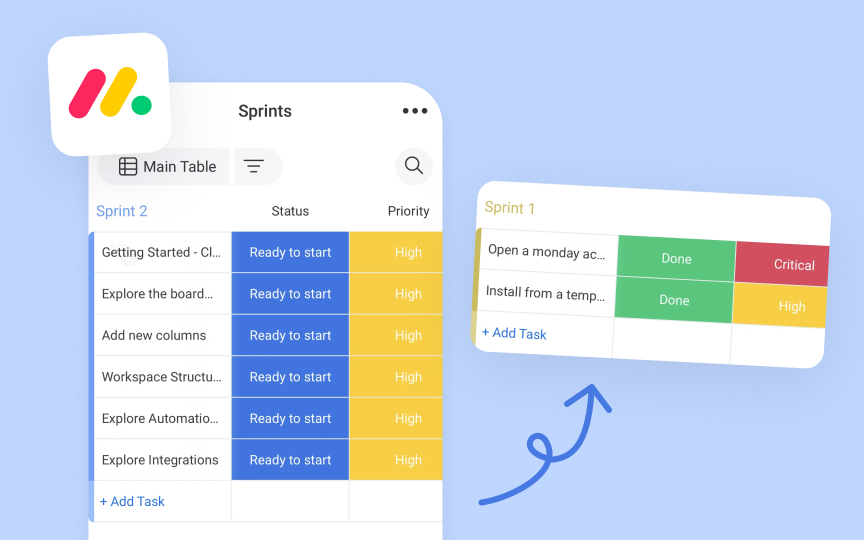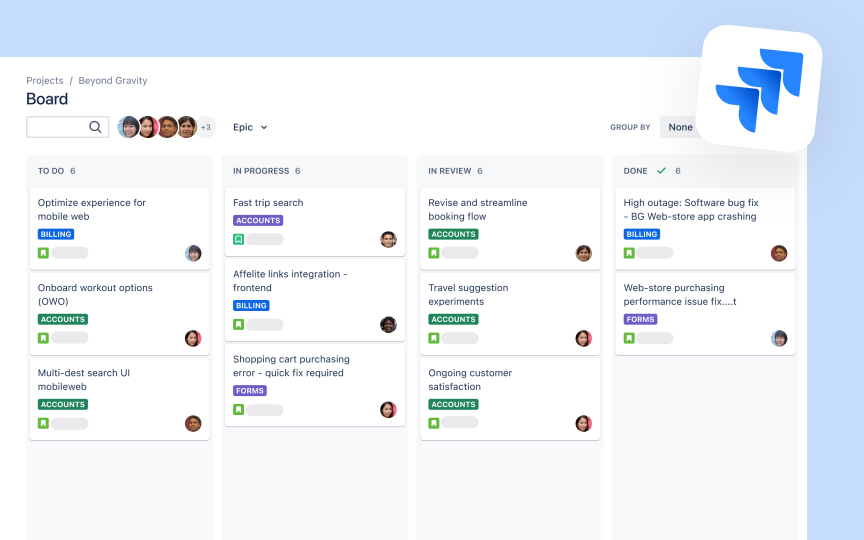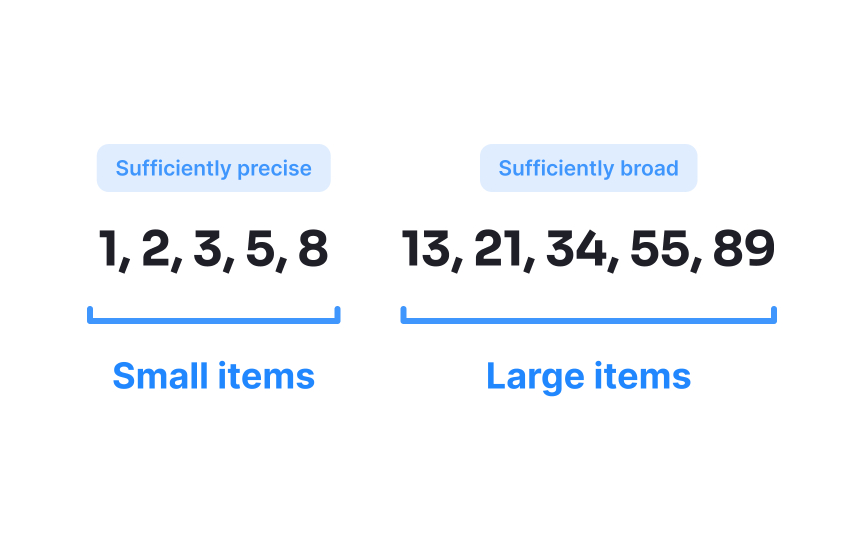Agile Methodology
Explore the principles and practices of agile to deliver value through iterative, customer-focused product development
Agile methodology revolutionizes software development and project management through iterative progress, team collaboration, and customer-centric delivery. At its core, agile breaks down complex projects into manageable chunks called sprints, enabling teams to adapt quickly to changing requirements while maintaining consistent productivity. Daily stand-ups, sprint planning, and retrospectives create a rhythm of continuous improvement, while tools like Kanban boards provide visual transparency into project progress.
In agile setups, cross-functional teams work in close collaboration, sharing responsibility for delivering working solutions rather than just meeting specifications. This emphasizes outcomes over rigid processes, embracing change as an opportunity rather than a disruption. Product owners represent customer interests, scrum masters facilitate team efficiency, and development team members collectively own the quality and delivery of each increment. Through constant feedback loops and incremental delivery, agile transforms how organizations approach complex projects, fostering innovation, transparency, and sustainable development practices that consistently deliver value to stakeholders.
An agile team is a small, self-contained crew where everyone has different skills but works toward the same goal. Instead of having separate departments that pass work back and forth, agile brings together all the needed talents into one team of 3-9 people.
Every agile team has 3 key roles. The product owner decides what needs to be made and why. The scrum master helps everyone work together smoothly and removes any obstacles. The development team members actually create the product.[1] Unlike traditional teams where a manager assigns all the work, agile teams decide among themselves how to get things done. This is called "self-organization." It's similar to how a group of friends might organize a dinner party — everyone contributes their skills where they're most useful, rather than following strict assignments.
In agile teams:
- Each team member works on only one main team at a time
- Everyone shares responsibility for the final product
- Communication happens directly, not through managers
- Teams stay together long-term to build strong relationships
- Daily face-to-face or video conversations keep everyone aligned
Scrum is a popular agile framework that provides a structured approach to sprint planning and execution. Teams use sprint planning meetings to decide what work they will complete in the next sprint period. Sprints are fixed-length iterations, typically lasting between 1-4 weeks, with most teams choosing a length that suits their delivery needs and market requirements. The planning meeting follows a time-box rule: for a two-week sprint, planning should not exceed 4 hours; for a one-week sprint — 2 hours. The entire team participates in planning, including the product owner and
Teams assess each item to understand technical requirements and break them into smaller tasks. When breaking down work, each task should be small enough to complete in a single day or less. This granular breakdown helps track progress more accurately and identify potential blockers early.
Planning must account for the team's real capacity. This includes reducing available hours for regular meetings, potential production issues, and ongoing maintenance work. Teams typically plan for 70-80% of their capacity, leaving buffer for unexpected work that may arise during the sprint.
Agile
Daily scrums, or stand-ups, are brief synchronization meetings lasting no more than 15 minutes. These meetings happen at the same time and place (or virtually) every day, creating a consistent routine for the team and ensuring everyone stays aligned.
During the scrum, each team member addresses 3 points: completed work since the last meeting, planned work for today, and any obstacles preventing progress. This format keeps discussions focused and actionable, highlighting where team members might need help.
The
Kanban is a visual system for managing work using a board with columns representing different stages of work progress. The basic Kanban board includes "To Do," "In Progress," and "Done" columns, though teams often add columns to match their specific workflow. Each column on a Kanban board has a work-in-progress (WIP) limit, which is the maximum number of items allowed in that stage at once. WIP limits prevent overload and help identify bottlenecks quickly. For example, if the "In Review" column is full, the team knows to focus on completing code reviews.
Kanban differs from Scrum by being a continuous flow system rather than working in fixed sprints. Items move across the board as capacity becomes available. The team tracks metrics like lead time (how long items take to complete) and cycle time (time spent actively working on items) to improve their process.[2]
Even with a sprint framework, teams can use a Kanban board to manage tasks within the sprint. The board would still have columns like "To Do," "In Progress," and "Done," and the team would track work through those stages.
New tasks typically enter the board in the "To Do" column after being prioritized in backlog refinement or planning. Teams should agree on who can add tasks and under what conditions, whether they come from user feedback, bug reports, or internal goals. This helps keep the board focused and avoids scope creep.
A
The product owner maintains the backlog, ensuring items are clearly described, prioritized, and valuable to users. Backlog refinement involves breaking large items into smaller ones, adding acceptance criteria (to be marked completed), and estimating effort (amount of work, complexity, and time needed). This activity typically takes up to 10% of the team's time during a sprint.
Prioritization uses factors like business value, risk, dependencies, and effort required. Higher priority items need more detail, while lower priority items can stay high-level until needed.
The backlog should be accessible to all stakeholders but only the product owner has authority to change priorities. Items can be added at any time, but they must be refined before entering a sprint.
Pro Tip: Review and remove backlog items older than 6 months if they haven't been prioritized — they likely won't be done.
Story points measure the relative effort required to complete work items. Unlike time estimates, story points consider complexity, uncertainty, and effort together. Teams use a sequence like Fibonacci numbers (1, 2, 3, 5, 8, 13) for estimation, where larger numbers indicate more complex work. Estimation happens through team discussion and consensus.
Build a reference scale by identifying a simple "1 point" story and estimating other items relative to it. A story estimated at 5 points should be about five times more complex than a 1-point story. If any story is estimated at 13 or higher, it needs breaking down into smaller pieces.
Points help measure team velocity (average points completed per sprint) and improve future sprint planning accuracy. Velocity naturally varies between teams based on their scale, so it shouldn't be used for team comparisons.
Design debt occurs when teams take shortcuts in user experience or interface design to meet deadlines. Like technical debt, these compromises accumulate over time and can significantly impact product quality and user satisfaction if not addressed.
Design debt manifests in inconsistent patterns, broken user flows, outdated components, or poor accessibility. To combat this, maintain a dedicated design debt
Regular design debt reviews can also help identify patterns and prioritize fixes. Allocate a percentage of each sprint to address design debt alongside new feature development. This might include updating components to match current design systems, improving accessibility, or streamlining user flows.
Retrospectives are structured meetings held at the end of each sprint, during which teams reflect on their work process. Unlike status reviews, which focus on what was built, retrospectives examine how the team worked together and identify improvements for future sprints.
The meeting follows a clear format: gathering data about what happened, generating insights about why things happened, and deciding on specific actions to improve. Teams discuss what went well (to continue), what didn't go well (to change), and what they should try next sprint.
Retrospective actions should be specific, measurable, and achievable within the next sprint. For example, instead of saying “enhance collaboration,” the team could agree to “set up a shared digital workspace to improve file sharing and communication.” Tracking progress on these action items is essential for team accountability.
The
References
Top contributors
Topics
From Course
Share
Similar lessons

Who is a Design Leader?

Leadership Styles





















